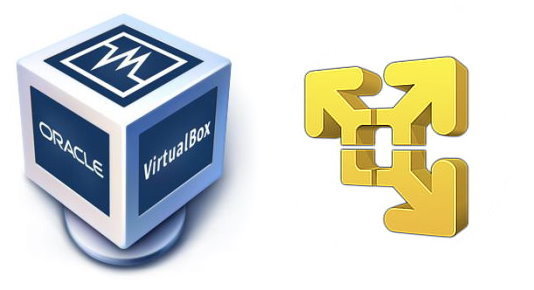
There are many articles comparing Virtualbox and VMware products, but I could find none that would list the points important for my industrial automation tasks. So here is my list, still growing, of pros and cons of VMware Workstation Player v15.5.6 as compared to Virtualbox 6.1.10.
So far VMware Workstation Player better suits my purposes.
Pros:
- Automatic installation for standard OS distributives.
- Better shared folders (via Samba).
- The command Compact Disk works and quite fast.
- Defragment Disk command.
- Splitting of disk images makes the archiving of VM more reliable.
- No crashes when booting from network (e.g. virtualbox crashes when booting Kali Linux Live Gnome via netbootxyz).
- Possible to add hard drive to a running VM (SCSI).
- Copied virtual machines are made unique automatically, no need to modify any ID in the config file.
- OpenGL works more reliably but the version is lower — 1.1.
- It is possible to put guest’s RAM on disk (in file vmem) — enabled by default. To disable, add ‘ prefvmx.minVmMemPct = “100” ‘ to /etc/vmware/config .
- It’s more convenient to share one virtual machine between several users: with Virtualbox you have to reset the permissions of the vmname.vbox file before switching to a new user.
- The keyboard works more reliably (in VirtualBoxб Alt is often sticky lately).
Cons:
- Not open source, forbidden for commercial usage.
- Not possible to pause a virtual machine.
- Less convenient to use multiple monitors (allowed only in full-screen mode, problems with remote control software).
- Impossible to run in headless mode (without GUI), e.g for remote clients. In Virtualbox it is enough to use the built-in “VBoxHeadless -s” command, and VMplayer requires installing VIX API, which is free but you have to register and wait for validation. The VIX installation is quite complicated:
sudo ln -s /usr/lib/x86_64-linux-gnu/gtk-2.0/modules/libcanberra-gtk-module.so /usr/lib/libcanberra-gtk-module.so sudo apt update sudo apt install build-essential open-vm-tools cd ~/Downloads wget https://download3.vmware.com/software/player/file/VMware-VIX-1.17.0-6661328.x86_64.bundle cp /usr/lib/vmware-installer/3.0.0/python/libpython3.7m.so.1.0 . sudo rm -rf /etc/vmware-installer sudo sh VMware-VIX-1.17.0-6661328.x86_64.bundle wget https://download3.vmware.com/software/player/file/VMware-Player-15.5.5-16285975.x86_64.bundle sudo sh VMware-Player-15.5.5-16285975.x86_64.bundle rm VMware-VIX-1.17.0-6661328.x86_64.bundle rm VMware-Player-15.5.5-16285975.x86_64.bundle rm libpython3.7m.so.1.0 sudo gedit /usr/lib/vmware-vix/vixwrapper-config.txt Then add line: player 19 vmdb 15.5.5 Workstation-14.0.0 To start VM in headless mode: vmrun -T player start /home/common/vmware/Warez/Windows\ 10.vmx nogui
After this, vmrun works in gui mode, but nogui doesn’t work — Unknown error.
- Difficult to enter BIOS or boot menu. In order to delay, add to .vmx file:
bios.bootDelay = "1000"
- Renaming VM is more difficult: files need to be renamed manually.
- The keyboard shortcuts Super + cursor arrows do not work in Ubuntu 18.04 VM under Ubuntu 18.04 host. It works OK with Ubuntu 20.04
- Some keys (cursor arrow, Enter in the numeric keypad) don’t work over Anydesk or Teamviewer: Win10 – Anydesk/Teamviewer – Ubuntu 18 – VMware – Windows 10.
Workaround: switch off Num Lock and use the numeric keypad.
